Michelangelo Buonarroti, a quintessential figure of the Italian Renaissance, was not only a revered painter but also a prolific sculptor whose creations continue to radiate sheer brilliance centuries after their conception. The stone came to life under Michelangelo’s expert hands, imparting to the world timeless masterpieces such as ‘David,’ ‘Pieta,’ and ‘Moses.’
His evolution as an artist, the remarkable techniques he employed, and the profound impact his oeuvre has left on the subsequent generations essentially make up the fabric of his astounding legacy. As we explore the life and career of Michelangelo, we delve into the heart of the Renaissance era that shaped his artistic vision and embark on a journey through the ideas and passion that fueled his iconic statue creations.
Table of Contents
- Michelangelo: The Man And The Artist
- The Conception and Creation of Michelangelo’s Statues
- Notable Masterpieces and Their Impact
- Michelangelo’s Legacy in Sculpture
- Related Questions
Michelangelo: The Man And The Artist
Born in 1475 in Caprese, Michelangelo was destined to become a beacon of the arts, his work forever influencing the spheres of sculpture, painting, architecture, and poetry.
The nuances of Michelangelo’s life significantly infused his creations, the profound influence of his experiences breathing life into each masterpiece.
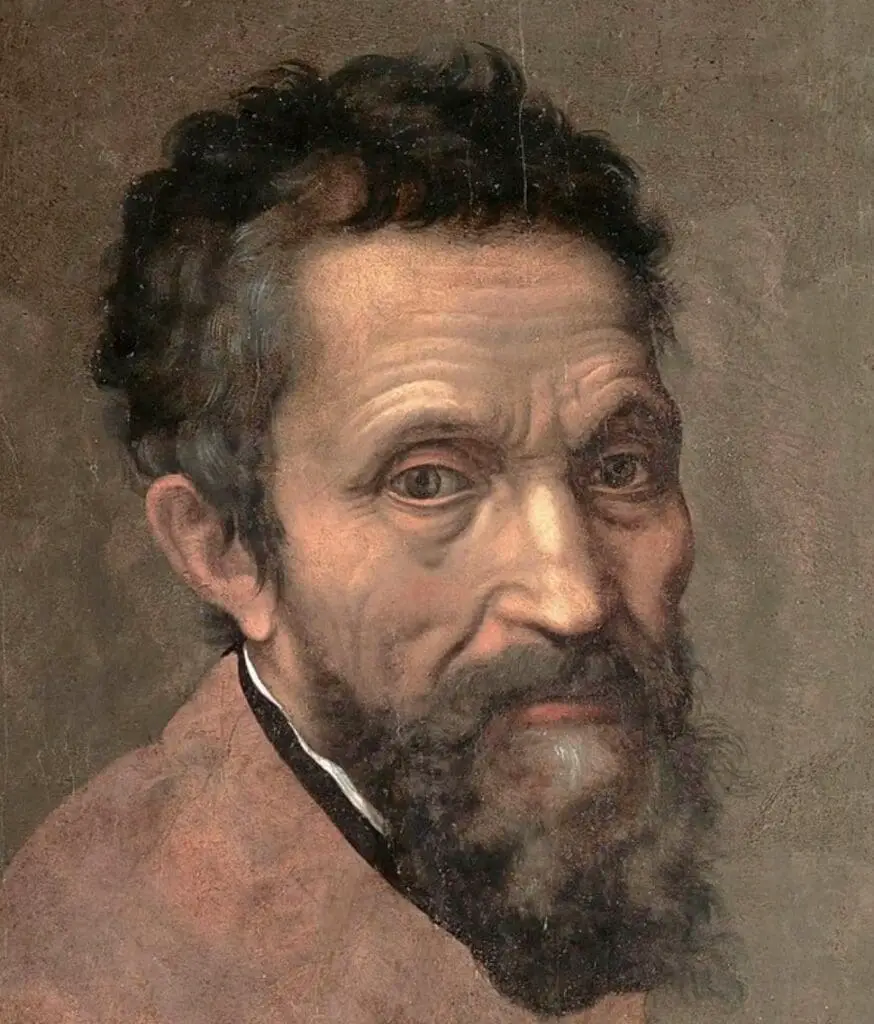
From an early age, Michelangelo demonstrated an extraordinary propensity for drawing, much to the perturbation of his father, who harbored a less dignified outlook on the artist’s career.
Undeterred, Michelangelo sought apprenticeships, eager to immerse himself in the world of hewn stone and fresh paint.
At 13, he dove into an artistic haven under the tutelage of Domenico Ghirlandaio, one of the most renowned painters of the time.
The vital lessons from this period directly contributed to the maturing artist’s skill set, nurturing his deep admiration for classical antiquity and human form.
Following his time with Ghirlandaio, Michelangelo achieved immense recognition for his sculptures.
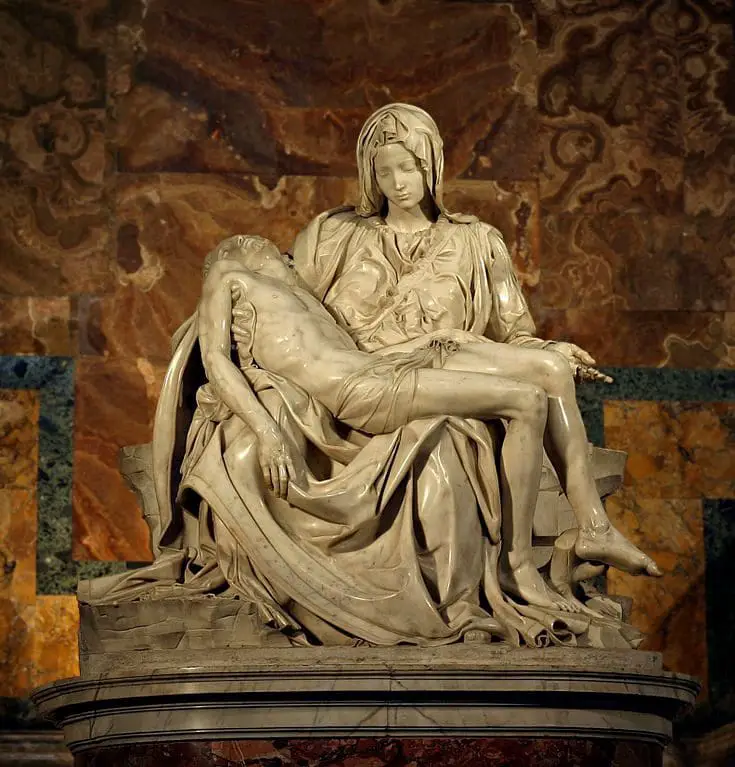
Notably, his breakout work “Pieta,” a representation of a grieving Virgin Mary holding Christ’s body, possesses extraordinary emotional depth.
Drawing on personal experiences of loss and sorrow, Michelangelo infused a raw vulnerability into the scene.
This theme of emotional authenticity reverberated throughout his career, often interwoven with his deep commitment to capturing the beautiful, noble aspects of humanity.
Throughout his life, Michelangelo struggled with internal battles and external pressure, occasionally landing in the heart of political tensions.
Historical sources often depict him as melancholy, brooding, and dissatisfied with his work.
Yet, he was steadfast in his faith, which inspired many of his compositions, enabling him to translate daunting biblical narratives into compelling visual form.
Michelangelo’s masterwork on the Sistine Chapel ceiling unsurprisingly gives credence to his profound religious devotion.
Displaying dozens of biblical scenes sprawling across an immense surface, the ceiling symbolizes the artist’s deeply embedded connection to spirituality.
Moreover, Michelangelo’s intimate understanding of the human body significantly influenced his work.
While painting the Sistine Chapel or sculpting the ‘David,’ he showcased an intrinsic appreciation of human anatomy, obsessively studying cadavers to understand the intricacies of the human form.
The heroism etched into the marble of the ‘David’ or the raw human emotion displayed in ‘The Last Judgement’ echoes Michelangelo’s exploration of what it truly means to be human, its grandeur, weaknesses, and divine association.
Michelangelo passed away in 1564, leaving a legacy written in stone, paint, and words.
Few artists in history possessed such well-rounded proficiency in a diverse range of mediums, quickly staking a claim as one of the most influential figures in Western art.
The myriad elements of his journey crystallized in his art, nudging spectators to delve into deeper understandings of spirituality, mortality, beauty, and human resilience.
His art serves as a memoir of his life experiences, inviting viewers to contemplate the intersection of art and human existence.
Through every brushstroke and every chiseled line, Michelangelo’s art remains undeniably intertwined with his narrative.
His life story gave his art its soul, subsequently retelling that story through the ages.
Be it in the form of Mary’s sorrow, Adam’s creation, or David’s triumph, each piece reflects the depths and heights of Michelangelo’s extraordinary journey.
Unfolding across time, his life reminds us all that art and experience are inseparable – a dance between the seen and unseen, the tangible and the soulful; Michelangelo was indeed the maestro of this divine waltz.
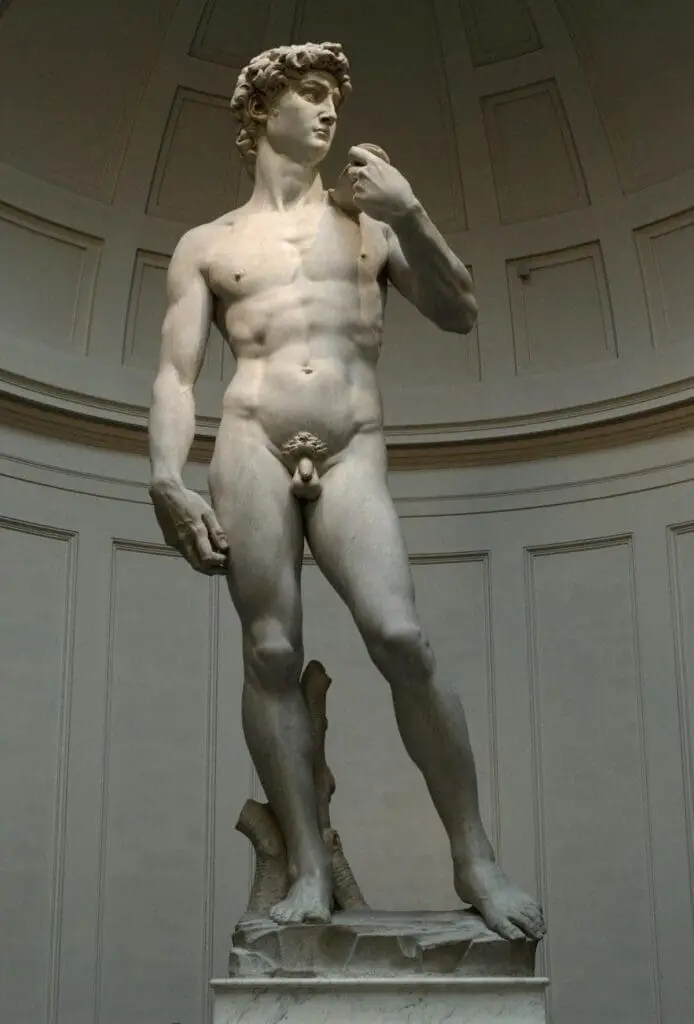
The Conception and Creation of Michelangelo’s Statues
Whether viewed by the discerning eye of an art connoisseur or the casual glance of ordinary passersby, Michelangelo’s statues can captivate the hearts and minds of audiences at first glimpse.
One may wonder how Michelangelo, the pinnacle of Renaissance art, created such compelling works of sculpture. The answer lies in his innovative techniques and the unique raw talent underpinning his craft.
Immersing himself in the study of marble and its potential from his early years, Michelangelo understood the physical properties of marble – their strengths, weaknesses, and estates of malleability. This was a fundamental skill that enabled him to chisel through the dense marble and bring out the monumentality of his subjects.
Like many sculptors of his era, Michelangelo employed the ‘subtractive method’ – a process that involved chipping away at a single block of marble to unveil the figure within.
However, unlike his contemporaries, Michelangelo saw his art as a process of ‘liberation.’ He believed that the stone’s inherent form dictated the final shape of his sculptures. Thus, his envisioned masterpiece was not carved but released from the marble block.
No discussion about Michelangelo’s technique could be complete without mentioning his exceptional detailing – a feature that makes his statues appear incredibly lifelike. Drawing upon his deep understanding of human anatomy, he forged his figures with an unmatched level of precision.
By mastering the art of ‘contrapposto,’ or the twist of the human body, he created an illusion of movement in his sculptures, which was unprecedented for his time.
His pioneering approach also included the innovative use of natural light. Through skillful carving, he manipulated light and shadow to suggest depth and contours on his statues. This played a vital role in creating the realistic flesh-like texture that typifies Michelangelo’s works.
The captivating realism of sculptures like David or Moses wasn’t just achieved through meticulous craftsmanship and keen anatomical understanding and employing ‘stippling.’ This technique involved creating small, subtle, randomly spaced holes on the marble surface to scatter light and give the illusion of a skin texture.
At a time when most sculptors painted their statues, Michelangelo left his uncolored to present the pureness of marble best, allowing the natural luminosity of the stone to mimic the glow of human skin. This symbolizes his devotion to the medium’s integrity, a testament to his vision of transcendent beauty captured in stone.
Michelangelo’s technique was not merely a set of mechanical processes but a creative convergence connecting physical labor, intellectual exercise, artistic perception, and spiritual intuition. His profound belief in his works’ preexistence in the marble and his unwavering dedication to releasing them to the world illustrate not only his craftsmanship but his soul embedded in every chisel stroke.
Thus, unraveling the innovative techniques and path-breaking artistic intuition of Michelangelo’s statues does more than shed light on the master sculptor’s craftsmanship.
It allows an insightful glimpse into the fiercely personal and deeply spiritual journey of an artist wrestling with marble and, indeed, with his inner self to explore the most profound aspects of human existence and expression.
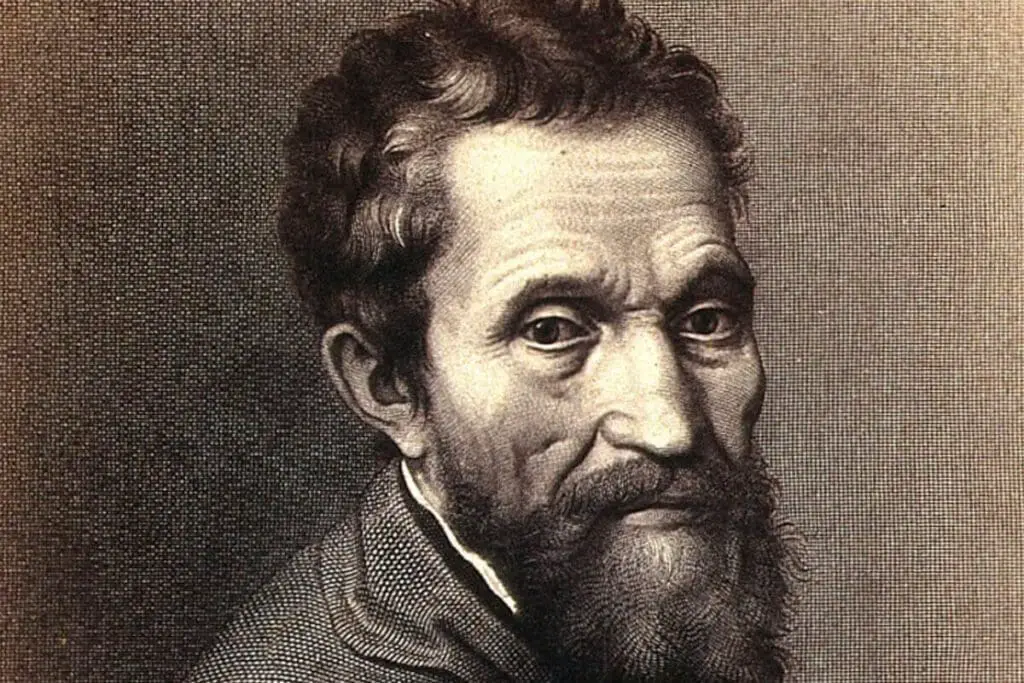
Notable Masterpieces and Their Impact
One of the most esteemed sculptures by Michelangelo is none other than the “David.” Crafted between 1501 and 1504, “David” is an emblem of strength and youthful beauty. Hailing biblical tales, David is depicted before his famous battle with Goliath, epitomizing the spirit of a resolute underdog.
This monumental statue, over 17 feet high, artistically chronicles David in contemplation, further showcasing Michelangelo’s unprecedented insight into human emotion and expression.
Illuminating the magnitude of his creativity, the sculpture showcases its defined musculature and smooth texture, reflecting the light and captivating the viewer. No wonder “David” eternally remains a profound symbol of human strength and beauty.
Dovetailing into Michelangelo’s impressive repertoire is “Moses”. Executed between 1513 and 1515, the statue is part of the tomb of Pope Julius II in Rome. This larger-than-life marble sculpture encapsulates the enigmatic figure of Moses, the biblical prophet.
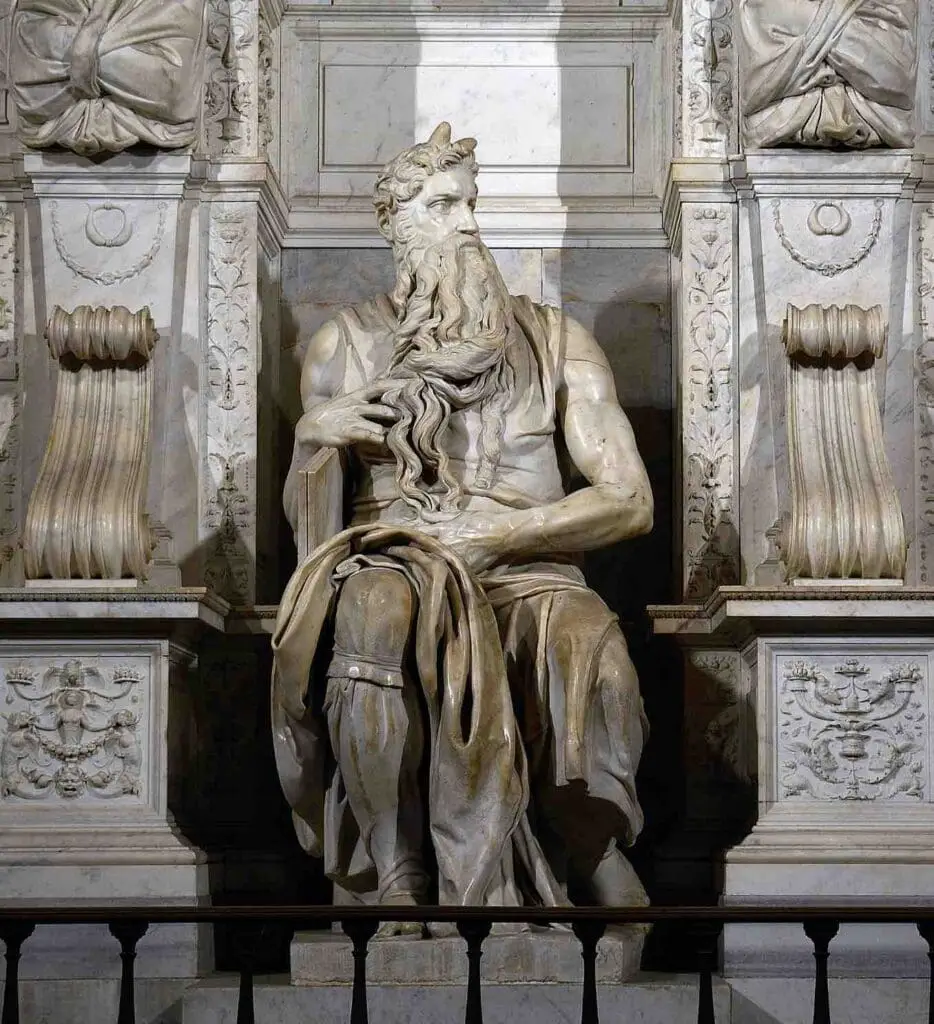
Michelangelo captures Moses’s dignity and power, making it an embodiment of grandeur and grace. Moreover, his distinctive portrayal of Moses with horns, a common misunderstanding in translating the Bible in those times, further heightens the mystery and intrigue surrounding this statue.
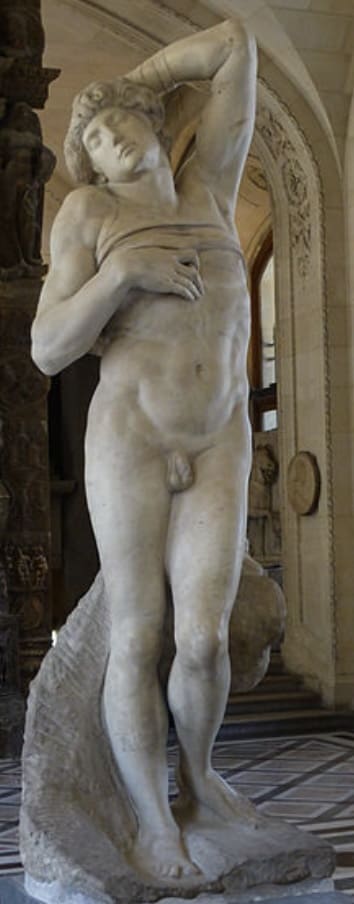
Stepping further, our journey brings us face-to-face with “The Dying Slave” and “The Rebellious Slave.” Created for the tomb of Pope Julius II, these unfinished sculptures echo a sense of defiance and struggle, pivotal themes in Michelangelo’s works.

The unpolished marble and the unfinished limbs of the statues poetically speak to Michelangelo’s belief that art is always in the process, capturing the spirit of ‘non finito,’ the intentionally unfinished.
Designed for the Medici Chapel in Florence, the “Medici Madonna” shines as another gem through Michelangelo’s perspective, demonstrating his deep understanding of the relationship between humans and the divine.
This work also manifests Michelangelo’s mastery of creating emotional tension through physical forms, birthing a unique language in sculpture.
Sans doubt, Michelangelo’s works, such as these and many more, narrate a tale of human endeavor, divine aspiration, and artistic evolution. His statues are not just colossal pieces of marble; they are historic testaments bringing forth the artist’s philosophical views, innovative techniques, and extraordinary comprehension of human anatomy and emotions.
Through the strokes of his chisel, Michelangelo revolutionized how the world perceived sculpture, forever engraving his genius in the annals of art history. It is through these masterpieces that one peers into the heart of the man who unequivocally was, in every sense, a Renaissance master.
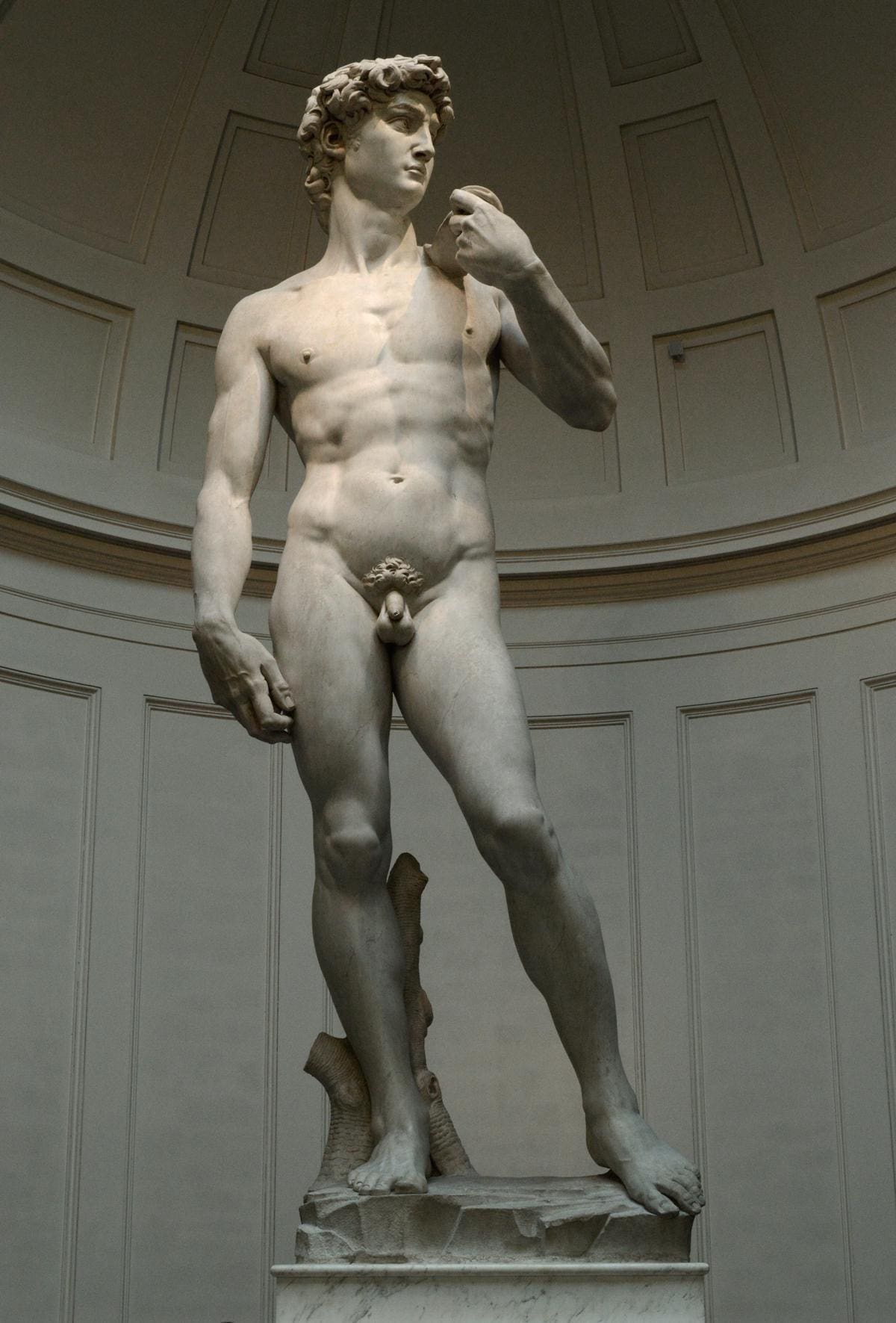
Michelangelo’s Legacy in Sculpture
Michelangelo’s profound influence on art is undeniable, but equally intriguing is how his work impacted successive artists and sculptural trends. The sculptures of this Renaissance master have become immortal, forever embedded in the rich tapestry of art history.
They not only redefined the possibilities of the medium but also shaped the future of sculpture in unimaginable ways.
One of the pervasive trends that Michelangelo perpetuated was humanism, a scrutiny of the dignity and worth of an individual. Emphasizing the individual’s potential, precisely the ‘heroic’ individual, became a popular theme for successive generations.
The “David” – Michelangelo’s towering, heroic figure of youth – was interpreted widely as an emblem of human potential and capability. This focus on individualism significantly influenced the thematic fabric of future sculptural works, noticeably seen (and felt) in the sculptures of Bernini, Rodin, and even in modern art pieces.
Another way Michelangelo’s work impacted future artists lies beneath their surface. Michelangelo broke conventions with his bold, high-relief sculpting, where figures appeared almost in the round.
This courageous approach increased depth perception, transforming static sculptures into dynamic pieces that demanded viewer engagement. A significant repercussion of this approach is the dynamic movement embedded in Baroque sculptures, particularly the works of Bernini.
Much of the innate strength and dynamism found in Michelangelo’s statues emanate from his judicious use of tension and relaxation within the anatomy of his figures. This potent interplay added a sense of gravity and calmness to his statues, a technique future artists would find instrumental in invoking emotion.
The hauntingly beautiful Carpeaux’s “Ugolino and His Sons” is a classic example where drama is enhanced using these muscular tensions and relaxations, meticulously incorporated into the sculptural design.
Michelangelo’s detailed and expressive renderings of facial features and musculature sparked a realism trend that has endured through generations. His understanding of the human anatomy and his ability to reproduce it with such realistic detail breathed life into cold marble statues.
This particular aspect of Michelangelo’s technique is visible extensively in Rodin’s sculptures, where the meticulous rendering of intertwined bodies and expressive faces stands as an ode to the master himself.
Furthermore, Michelangelo’s work also ignited the flame of exploration within artists. His intentional decision to leave some of his works unfinished offers an unguarded view into the creative process, revealing the evolution of form under the chisel.
Rodin, in particular, embraced this ‘nonfinito’ concept, where the notion of an ‘unfinished’ piece was considered complete, as it represents a part of reality.
In conclusion, Michelangelo’s revolutionary and innovative methods in the world of sculpture significantly impacted successive artists, shifting not only the aesthetic norms but also altering the thematic trajectory of sculpture.
His work inspired and catalyzed new exploration and increased depth in sculptural narratives, ultimately leading to the surge of modern sculptural trends we witness today. Through his influence, Michelangelo’s legacy continues to echo in the vaults of art history and the hearts of art lovers worldwide.
As we reflect on the colossal impact of Michelangelo’s statue artworks, we understand how profoundly they have influenced and continue to shape sculptural art.
His creations, conceived and executed with revolutionary techniques and an unbound imagination, introduced a new artistic vocabulary that continues to resonate with artists across every epoch.
The legacy of Michelangelo, thus, extends far beyond his physical lifespan, echoing through the corridors of time. His enduring masterpieces, an amalgamation of astonishing skill, uncompromised dedication, and profound emotional depth, stand not just as tout de force of artistry but also a testament to the timeless power and relevance of art.
Anita Louise Art is dedicated to art education, great artists, and inspiring others to find and create their art. We love art that uplifts and inspires. #ArtToMakeYouSmile! #ArtToMakeYouHappy!
If you are interested in seeing any of my art, you can find out more by clicking here. If you are interested in what inspires me and my paintings, you can discover more by clicking here.
We have a free newsletter and would love you to be part of our community; you can subscribe to the newsletter by clicking here. If you have any questions, I would be happy to talk to you. You can reach me, Anita, by clicking here.
Subscribe to our Anita Louise Art YouTube Channel filled with great videos and information by clicking here.
Join us for our podcast “5 Minutes With Art.” Spend just 5 minutes a week with us to discover and learn about great art and artists. You can find out more about our podcast by clicking here.
Related Questions
Did Michelangelo And Leonardo Know Each Other?
Michelangelo and Leonardo da Vinci knew each other but were considered bitter rivals. Leonardo da Vinci and Michelangelo knew each other, but they did like each other. They were both asked to do a commission on the Council Hall of the Palazzo Vecchio and were supposed to work side-by-side; the project was never completed.
By clicking here, you can learn more by reading Did Michelangelo And Leonardo Know Each Other?.
Michelangelo’s Method To Paint The Sistine Chapel Ceiling
He built a large scaffolding structure that could move around the chapel to paint the ceiling; the painting of the Sistine Chapel was an extremely strenuous work that was a huge personal cost both physically and mentally to Michelangelo.
By clicking here, you can learn more by reading Michelangelo’s Method To Paint The Sistine Chapel Ceiling.
Michelangelo’s Sistine Chapel And His Payment
Michelangelo was paid 3200 gold ducats for his work on the ceiling of the Sistine Chapel, which would have been a very lucrative commission. We know that he stopped work on the ceiling for a while due to his not being paid by the Vatican. Michelangelo liked to give the impression that he was a very poor artist, but records have shown that he died an extremely wealthy man.
By clicking here, you can learn more by reading Michelangelo’s Sistine Chapel And His Payment.

